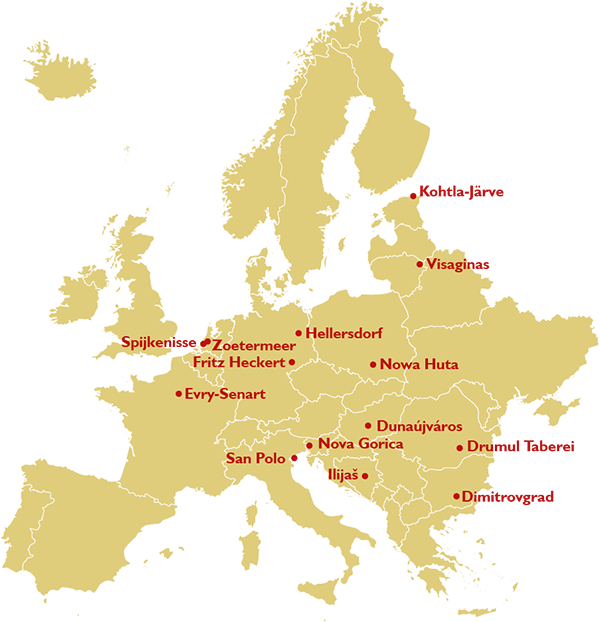In 1974 the USSR started building the Ignalina nuclear power plant on the banks of the largest lake of
Lithuania, Drūkšiai, which provided cooling water for the plant. Nearby, a New Town was built to house the families of the approximately 5.000 workers in the power plant. On the site of the future town there was a single village house, which remained until 1981, and a pine forest. In 1977, the city was named ‘Sniečkus’ after the first secretary of the Lithuanian Communist Party. After the restoration of Lithuanian independence, the city was renamed after the lake on its territory – Visaginas.
As a condition for Lithuania’s accession to the European Union, the power plant had to be closed due to the similarity of its reactors to those of the Chernobyl power plant. Both energy blocks were closed in 2004 and 2009, and the decommissioning process will continue until 2038. Following the closure of the nuclear power plant, the city’s population has decreased significantly. In 1996, the population stood at 33,000 inhabitants, but by 2020, it had shrunk to 18,000. Furthermore, the town’s population is ageing rapidly.
Visaginas is one of the most multicultural cities in Lithuania, where Lithuanians according to statistics might be considered a ‘minority’. From the very beginning the inhabitants were arriving from different parts of the former Soviet Union, creating a mostly Russian speaking environment.
Visaginas is an atomic city designed to improve the quality of life. It comprises three micro-districts covering a total area of 9 square kilometres. The city is highly compact, with a focus on walkability and extensive green spaces. Architecturally, the town combines typical, modified typical and original projects. Until recently, Visaginas had only two single-family houses. However, the municipality has decided to increase the area of the town by allocating land for 99 individual house plots. Visaginas wants to become a vibrant and diverse multicultural city, a model for sustainable urbanism, eco- and slow living, a space of dialogue between past, present and future and an empowered civil society.
Representative Organisation:
Urban Stories





